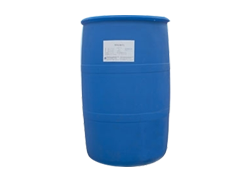Because of the hydrophobicity of organic pollutants and the possibility of pollutants being strongly adsorbed on the surface of soil particles or entering the soil pores, the concentration of pollutants in water solution will be reduced, which will result in the isolation of microorganisms and pollutants. Because microorganisms can not use extremely low concentration of pollutants, the degradation of pollutants will stop or slow down. Therefore, the decisive factor of degradation of organic pollutants in bioremediation is the low water solubility of pollutants, which limits the bioavailability of pollutants.

Surfactant is a kind of substance containing hydrophilic and hydrophobic groups. Surfactant is a kind of material with fixed hydrophilic and oil-friendly groups, which can be arranged on the surface of solution and can make the surface tension decrease significantly. Emulsifier is only one of surfactants, or a performance, and emulsifier can also be used as a penetrant.
Surfactant is also used in barley and meat products, which can affect the rheological properties of flour and emulsify the partially broken fat tissue; A new biological emulsifier produced by Candida utilis has potential application value in salad seasoning. Busscher and others found that surfactant produced by Streptococcus thermophilus in milk can prevent the proliferation of Streptococcus thermophilus producing odor, so it can be used for the control of odor in the heat exchange plate of pasteurizer; Sucrose ester can be used in frozen drinks, 7g, candy, pastry, bread, cake, etc.
Biosurfactant meets the requirements of functional food and green food additive, and can be used in functional food. It will become a widely used food additive in today and even future when human beings advocate health first.
It is a new technology to use biosurfactant to repair soil polluted by hydrocarbon and crude oil. Rhamnosperms, such as rhamnospora, remove a lot of oil from Alaska's gravel. Vandyke et al. Found that rhamnolipid produced by Pseudomonas aeruginosa can increase the recovery of hydrocarbons by 25% - 70% and 40% - 80% respectively from polluted sand and mud. Similarly, the recovery of fatty hydrocarbons and aromatic hydrocarbons was 56% and 73% respectively by using biosurfactants produced by Pseudomonas aeruginosa.